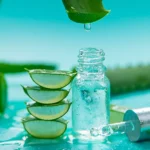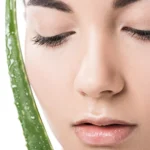Aloe Vera, a succulent species from the genus’ Aloe’, is renowned globally for its medicinal and beauty benefits. Its pulpy, translucent gel is packed with nutrients and antioxidants, promising many applications for health, skincare, and cuisine. However, one puzzling feature of this plant that often generates curiosity is why the aloe vera gel turns red. Today’s discussion delves into unraveling this intriguing phenomenon.
The Basic Composition of Aloe Vera Gel
Before discussing why aloe vera gel changes color, it’s crucial to understand its primary composition. The gel mainly consists of water (around 99%), which aids its cooling effects. The remaining 1% claims an impressive array of over 75 nutrients, including vitamins, minerals, enzymes, sugars, lignin, saponins, salicylic acids, and amino acids.
The Green Skin
The outer layer or skin of the aloe vera leaf is typically green due to chlorophyll – a pigment vital for photosynthesis in plants. Chlorophyll absorbs light most efficiently in the blue and red regions of the electromagnetic spectrum but less in the green areas; consequently, it reflects green light to our eyes. Hence, when we look at an aloe vera leaf, it appears green.
Oxidation Theory
When you cut open an aloe vera leaf and extract its gel-like substance inside, you will notice that it starts as clear or slightly yellowish — not red. This clear color signifies that all components are intact in their stable state; however, this color changes over time or under specific conditions, such as exposure to air (oxygen) and sunlight (UV rays).
The primary reason behind this transition relates to oxidation–a common chemical reaction that involves oxygen molecules reacting with other substances. When aloe vera gel is exposed to oxygen and sunlight, its phenolic compounds begin to oxidize. This oxidation process changes color from clear to yellow and eventually to red or pink-tinged, depending on the oxidation level.
Aloe Vera Gel Vs. Aloe Vera Latex
Another factor that could contribute to the red color change is potential contamination with aloe vera latex. This yellowish substance is found under the plant’s skin and can mix with the gel during extraction. If this latex oxidizes, it could turn reddish-brown, giving the gel a redder appearance.
Can You Still Use The Red Gel?
Subsequently, the indispensable question is whether you can still use the red-colored aloe vera gel. While oxidation does alter some properties of substances it interacts with, in the case of aloe vera gel, it doesn’t significantly diminish its beneficial properties. Therefore, yes! The red-colored gel remains safe for use.
However, if excessive heat exposure during sun drying or prolonged exposure to air has caused this color change, it’s more likely that some useful components might have been degraded or lost. Thus, always observing how you store your extracted aloe vera gel can help maintain its quality.
While an oxidized Aloe Vera gel may not look as appealing as the fresh version straight from the leaf’s core, it retains much of its benefits. The curious phenomenon of color change merely signifies nature’s complex chemistry and provides an exciting glimpse into how natural substances interact with their environment.
Despite this minor alteration via oxidation or contamination by latex – there remains no contesting against Aloe Vera’s immense applications across distinct realms. If anything, understanding why the gel turns red broadens our knowledge about this vital plant and enables us to appreciate nature’s intricacies all the more.
Understanding this phenomenon underscores the importance of properly handling and storing aloe vera gel to maximize its benefits. It reminds us that while aloe vera is a powerful plant with many uses, it’s still susceptible to natural processes like oxidation. So, next time your aloe vera gel turns red, remember—it’s all part of nature’s intriguing process!








